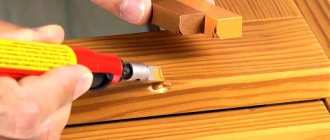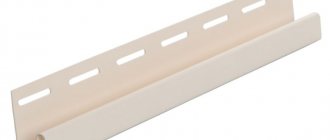Motor oil protects the internal combustion engine by collecting oxidation products, metal particles, resinous compounds and other contaminants.
Replacement is carried out every 5-10 thousand kilometers of the car, so the urgent problem is where to put the engine oil from the car and how it can be used.
Home craftsmen know many “old-fashioned” options for where to dispose of used, drained oil from the engine. Some of this heritage is really useful, but it’s better to immediately forget about some methods.
Get to know the different ways to use used oil, consider their disadvantages, and take note of the hazardous properties of the waste.
Feasibility of recycling
Discharge of waste into the ground, reservoir or sewer is detrimental to the environment, human and animal health.
Therefore, you need to look for alternative uses or take it to recycling collection points.
After the end of its service life, motor oil is unsuitable for use as engine protection, but it can become an assistant and find a “second life” in everyday life.
Waste petroleum products have excellent anti-corrosion properties, they burn well and can be used as a lubricant.
Waste liquids are stored in sealed, labeled containers to prevent leakage . Containers with petroleum products are placed in areas protected from moisture, precipitation, and direct sunlight.
Pour out
Not a good idea, but it's better than storing the waste in the garage, cluttering up the available space. Although by such actions the car owner pollutes the environment. But at the moment there are no serious legal foundations in the legislation that could prohibit motorists from pouring waste into the street (as in Europe); it is worth remembering the moral and ethical sides of the issue.
Waste used engine oils
Used motor oil has a toxic composition that kills all living things around it. If such a liquid gets into the water, it will provoke a massive death of fish and other underwater inhabitants.
If you decide to dump waste, do it right: in a vacant lot or waste dump, where soil contamination will not cause much damage to the environment, and the likelihood of chemicals getting into the reservoir will be minimized. It is prohibited to pour out large volumes of waste!
How can you use work-off?
In order to decide to reuse used engine oil on the farm, it will not be superfluous to know about the obvious unsafety of each method.
Impregnation of wood and hardening of metal
Do not rush to part with the waste or put it into the furnace if you have wooden outbuildings or a fence located away from open-air living quarters. Over many years of life, pests penetrate the natural material, damage it, and as a result, the tree turns into dust.
A negative scenario can be prevented by treating the material with waste oil. In addition to protection from bark beetles, sanding protects wooden objects from moisture, mold, mildew and sun .
An effective method appeared during the times of total shortage of the last century and has not lost its relevance over decades of practice.
It is dangerous to treat a residential building made of wood with such a composition. The least of the troubles is an unbearable smell that does not disappear for a long time. A more serious problem is that petroleum products are very toxic and dangerous to the health of people and pets.
The third reason is that a structure covered with a layer of flammable oil is extremely unreliable from a fire safety point of view ; one spark is enough to ignite.
The petroleum product can be used to treat wooden holders of shovels, hoes, and rakes. This composition is also suitable for strengthening metal elements. It is not necessary to be a blacksmith. And you don’t need a forge to harden metal. For a small part, a gas burner is enough.
Heating
With the high price of natural gas, many are looking for alternative heating options.
Using waste as fuel is a good idea for those who grow crops in a greenhouse or maintain a farm.
The most common way is to use solid fuel boilers. Even damp firewood, if watered with waste, flares up in a couple of minutes.
In farm greenhouses, heat guns are installed that run on a mixture of diesel fuel and any waste oil.
Smoke from burning petroleum products is very dangerous for people living nearby. The high toxicity of the waste does not allow it to be burned in or near residential premises.
If waste is burned in a boiler, a larger volume of toxic resins settles on its walls , and mainly carbon dioxide is released outside. If you use fuel away from people, the smoke will not harm your health.
Cleaning and intended use
Purified used oil can be reused for its intended purpose. It is often reused in low- and medium-boost internal combustion engines, as well as in hydraulic equipment.
The main and mandatory stage of mechanical cleaning is settling. The principle is the natural sedimentation of impurities and water in a suspended state, where the key effect is determined by gravity. The higher the particle size and specific gravity and the lower the oil viscosity, the higher the rate of particle sedimentation.
Metal particles, resinous substances and coke are more susceptible to precipitation. The mining must sit for several days until sediment settles. The oil is then carefully drained and passed through a filter. Standing up often does not lead to the desired result.
Even with a long process, most impurities remain suspended - especially in oils with detergents and oils with fine contaminants.
To get rid of oxidation products, a chemical method is used - exposure to coagulating substances. The most commonly used are sodium phosphate, zinc chloride, liquid glass, and starch solution.
Treatment of thresholds and car cavities
Even used motor oil has a use to protect your vehicle. Only not the engine, but metal parts from corrosion. Processing is used to process closed body cavities, sills, and wings. The method is suitable for both ferrous and non-ferrous metals , extending their service life by 5 years.
Treated surfaces become a fire hazard. In addition, the toxic material is harmful to health.
Lubrication of metal elements
Even the used product retains its lubricating properties. Therefore, it is used to treat chains, threaded connections and other friction surfaces that require regular lubrication.
However, the waste is not suitable for lubricating every device or fixture. For example, working off can be safely used to lubricate door hinges, vice mechanisms, keyholes (not in residential premises), and awnings on the doors of outbuildings.
It is strictly not recommended to use oil drained from the internal combustion engine to lubricate a chainsaw chain or do fine work on the joints of a drill. The reason is that used oil contains a lot of clots and small particles of metal shavings.
The oil channels of the tool are likely to become clogged, and it will be very difficult to clean them . High-quality mineral oil is usually used for this purpose.
Boar bait
Hunters use casting to lure wild boars. Animals hear the smell of petroleum products that is attractive to them and flock to it to clean their fur of parasites.
For disks
Many beginners use used oil to put the tire on the rim. The main driving motive is obvious savings. But the disadvantages of the method, according to knowledgeable people, completely cover the advantages.
Over time, the oil layer dries and hardens, turning almost into stone . It is very difficult to remove rubber from such a disc without damaging it. In addition, this “lubricant” takes an extremely long time to dry - operating the car becomes quite a risky endeavor.
Processing equipment
Specialized equipment for recycling used motor oil may vary depending on the operating method used. For small businesses, mini-units used for cracking are most often used. Their advantage is their compactness, affordable price and ease of installation.
Larger oil refineries may employ complex chemical processing equipment. However, it is important to remember that such installations require strict adherence to all operating rules and regular technical monitoring. They must operate at a certain temperature, and their maintenance requires much more personnel.
Can I throw it away?
Many car enthusiasts simply do not know where to use the waste, without thinking at all about the consequences for nature; they can throw it away and pour it directly onto the soil.
Used oil - be it motor oil, transmission oil or something else - is not just a liquid that has lost its beneficial properties.
Used petroleum products belong to the 3rd class of environmental hazard - it will take nature at least 10 years to recover from damage .
The dangerous properties of petroleum products are toxicity and fire hazard due to the ability to maintain combustion, self-ignition and spontaneous combustion.
In addition, petroleum products are considered very harmful chemical pollutants.
If about 20 g of petroleum products get into 10 kg of soil, it becomes unsuitable for plant life and soil microflora.
1 liter of waste completely deprives 40 thousand liters of water of oxygen. A spill of 1 ton of oil products pollutes 12 km2 of the surface of a water body.
Eating fish from a contaminated reservoir is dangerous to human health: hydrocarbons accumulate in the tissues of fish, reaching a toxic limit , then are transmitted along the food chain, forming carcinogenic formations in human cells.
Soil contamination with waste oil changes all its fertile and ecological functions, displaces air, and disrupts the circulation of water and nutrients. As a result, plant growth slows down and then their death occurs.
The combination of hydrocarbons and hydrogen sulfide inherent in petroleum products is dangerous for the human body. Men are susceptible to lung and larynx cancer, and women are susceptible to colon and breast cancer.
The cardiovascular system, liver, endocrine glands, central nervous system suffer , hematopoietic processes are disrupted - the concentration of hemoglobin and red blood cells decreases. Acute poisoning is possible, sometimes fatal.
Financial indicators and business payback
We should start with market size. It was mentioned above that Russian private car owners change 200 million liters of oil annually. If you pay 5-10 rubles per liter for mining, and sell the recovered resource at twice the price, you get a total annual income of 1-2 billion rubles.
Read also: “The child covers his ears with his hands
This does not take into account the income from household “frying”, which occurs almost every day, in almost every household.
With the cost of processing equipment being a million rubles, this money can be used to purchase about a thousand sets of equipment. Only for the first year. Here is the field for activity. Of course, there are production costs. Even if they are twice the cost of the equipment, the equipment will pay for itself quickly.
It should be remembered that combines, tractors and other agricultural equipment are well suited for testing. The main thing is that it must first undergo filtration processes, as well as enrichment with additives.
Profitability calculation
Where can I donate motor oil?
If you are not interested in any method of application, and the volumes of accumulated oil become alarming, at least for the sake of useful space in the garage, you need to part with the waste, of course in a legal way, by transferring it to a specialized collection point that buys used oil.
Such organizations often cooperate with automobile services, buying oil from them in bulk, but some are ready to purchase oil from individuals.
There are many similar companies that have the appropriate license. They all provide transportation services, so there is no need to worry about how to remove the oil.
This method is not only legal, but also profitable - you can get money for any, even small amount of work.
Unfortunately, not every region has legal entities willing to buy used oil in small quantities. In this case, you need to look for resellers - private traders who are not against purchasing the mining and then selling it en masse to such companies . It’s not difficult to find offers to buy oil on various online platforms - you can, for example, search on Avito.
At collection points, the waste is subjected to recycling - processing, which results in a new product with specified properties.
Waste material that cannot be recovered is sent to other production sites where it is used as fuel or used as a raw material for the production of lubricants or road surface materials.
Recycling business
It is possible to set up your own production for processing waste oil into diesel fuel. Investors with average incomes can afford this, since equipment for processing used oil costs several million rubles, and the raw materials are very easy to obtain, and there is constant access to it. Used oil collection is carried out in any city.
Such organizations receive used oils for a small price (about 5 - 10 rubles per liter of liquid), process it, and the resulting raw materials are sold at a much higher price to other enterprises, as material for their products.
Making a drip heater
Most often, craftsmen use old oxygen and propane cylinders with a diameter of 220 and 300 mm, respectively, to assemble droppers. The former are preferable because of their powerful thick walls that can last a long time and not burn out. A pipe made of low-carbon steel (St 3-10) with a wall thickness of 5 mm or more is also suitable.
Advice. The ideal option for a durable housing is a pipe made of heat-resistant stainless steel alloyed with chromium, molybdenum or nickel (for example, 15X1MF or 12X18H12T) with a wall no more than 3 mm. Perhaps you or a neighbor has one in your garage. There is no need to buy it specially - it will be too expensive.
Select rolled metal for other parts according to the drawing of the furnace with top feed of waste into the combustion zone. The blower fan is a “snail” from a VAZ 2108 cabin heater or its Chinese equivalent, the fuel line is a stainless tube with a diameter of 8-10 mm.
The manufacturing technology is as follows:
- Make a fire bowl from a piece of pipe or take a ready-made steel container. It must be removed through the inspection hatch, so do not make the tray too large.
- Cut openings in the body for the chimney pipe and cleanout hatch. In the latter, make a frame and install the door (possibly bolted).
- Make an afterburner. Take your time to drill all the holes indicated on the drawing; do the bottom 2 rows first. You will complete the rest while setting up the oven.
- Weld a cover and an air duct with a flange for mounting the fan to the afterburner. Attach the fuel supply device as shown in the photo.
- Assemble the heating unit and connect it to the chimney.
Advice. For greater stability to the body, it would not hurt to weld a frame from a steel profile or angle according to the example shown in the photo.
The afterburner in the photo is a close-up - side and end views
. To regulate the heating power, you need to provide a fan speed control and a device for dosing the fuel supply (as a rule, an auto-drinker with a jet break is used). According to reviews from craftsmen on a popular forum where heat extraction issues are discussed, fuel consumption in the furnace can be monitored visually. The trend is this: if the oil flows in drops at the break in the stream, then less than 1 liter per hour burns, and when a thin stream flows, more than 1 liter per hour.
Recommendation. Control the fan performance using a cheap Chinese PWM controller (price is about 8 USD).
Different designs of drip bowls
After igniting and warming up the heater, it is necessary to set the optimal operating mode. The procedure is carried out according to the same scheme as with the miracle stove: you need to achieve the most transparent smoke from the chimney by drilling additional holes in the afterburner. The ideal flame color is blue, normal is yellow, and reddish is unsatisfactory. In the latter case, low heat transfer, high consumption and soot formation are observed. For details about the design and assembly of the furnace, see the video:
Experience of oil recycling in other countries
In the Russian Federation, only 20% of waste is recycled. EU countries have increased this figure to 50%.
For example, in European countries they collect:
- Frying oil in all catering outlets and among the population. It is suitable to be processed into biodiesel fuel.
- Fats after use on ships or in army kitchens. The generator will work just as well with them as if using new fuel.
We can often see oil stains under our neighbors' overnight parking spots, but we don't attach any importance to it.
European laws interpret this as a violation of environmental protection and punish it very strictly. The excuse that oil stains are on the asphalt and not on the ground is childish talk. The coming rain will move these harmful substances into the ground.
The burning of waste in the EU and the USA is strictly prohibited, for which criminal liability is provided.
Collecting used cooking oil from a cafe











